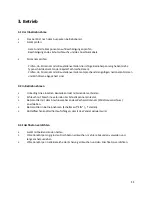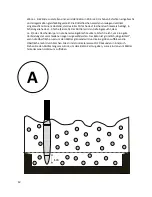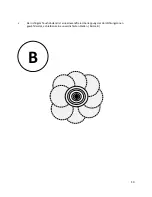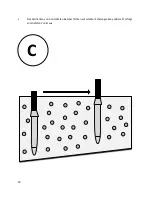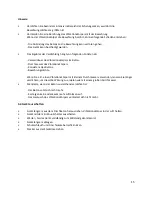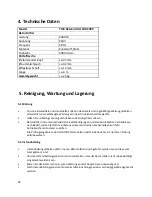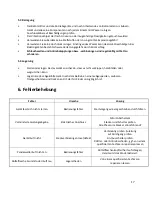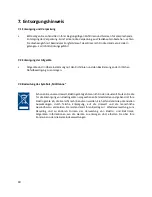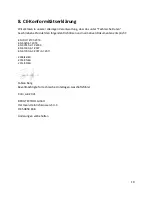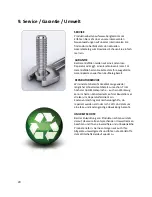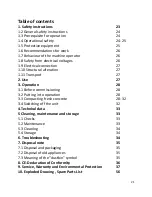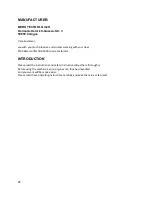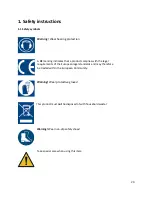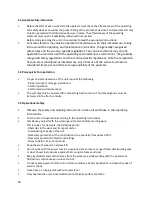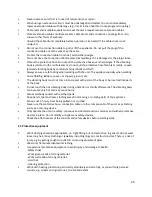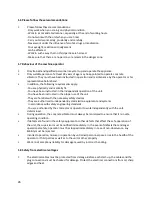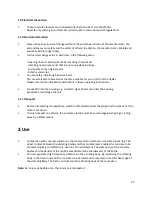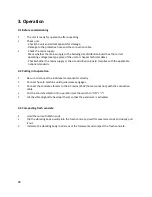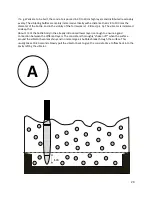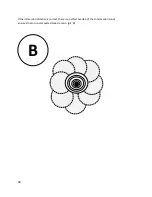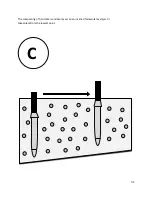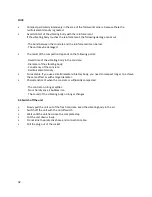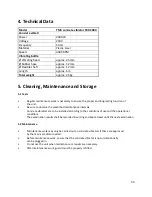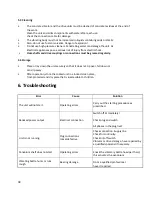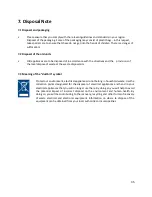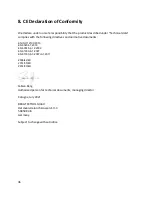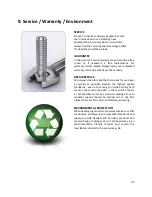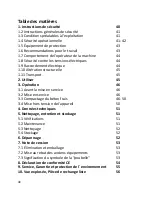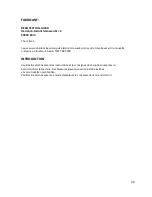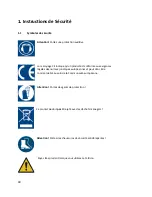
25
•
Never operate a unit that is in need of maintenance or repair.
•
When using an extension cable, it must be undamaged and tested. You must immediately
replace extension cables with damage (e.g. cracks in the sheath) or loose plugs and couplings.
•
Cable reels and multiple sockets must meet the same requirements as extension cables.
•
Protect extension cables, multiple sockets, cable drums and connection couplings from rain,
snow or other forms of wetness.
Unwind the cable drum completely before operation. Fire hazard if the cable drum is not
unwound.
•
Do not use the connection cable to pull or lift the appliance. Do not pull the plug of the
connection cable out of the socket by the cable.
•
Protect the connection cable from heat, oil and sharp edges.
•
You must have the connection cable replaced immediately if it is damaged or the plug is loose.
•
Protect the protective hose. Do not pull the protective hose over sharp edges. If the vibrating
body is jammed in the reinforcement, do not pull the protective hose forcibly or jerkily. Loosen
jammed vibrating body by carefully moving it back and forth
•
Always ensure a safe footing when working with the unit. This applies especially when working
on scaffolding, ladders, uneven or slippery ground, etc.
•
The vibrating body must not come into contact with parts of the body or be inserted into parts
of the body.
•
Do not touch the hot vibrating body during operation or shortly afterwards. The vibrating body
can become very hot and may cause burns.
•
Also avoid body contact with earthed parts.
•
Keep hands, feet and loose clothing away from moving or rotating parts of the appliance.
Serious risk of injury from being pulled in or crushed.
•
Never use the protective hose, connection cable or other components of the unit as a climbing
aid or as a securing device.
•
Only operate the unit in a safety-conscious and hazard-conscious manner and with all protective
devices in place. Do not modify or bypass any safety devices.
•
Check the effectiveness of the controls and safety devices before starting work.
1.5 Protective equipment
•
Work clothing should be appropriate, i.e. tight-fitting but not restrictive. In general, do not wear
loose long hair, loose clothing or jewellery including rings on construction sites. There is a risk of
injury e.g. by getting caught or pulled in on moving equipment parts.
•
Wear only flame-retardant work clothing.
•
Use personal protective equipment to avoid injury and damage to health:
-Safety shoes.
- Work gloves made of strong material.
- Work suit made of strong material.
- Hard hat.
- Hearing protection.
•
Work with hearing protection particularly attentively and carefully, as you will only perceive
sounds, e.g. screams or signal tones, to a limited extent.
Summary of Contents for TBR 2000
Page 2: ...2 ...
Page 56: ...56 Explosionszeichnung Exploded drawing Vue explosée ...
Page 58: ...58 Notizen Notes Notes ...
Page 59: ...59 ...

